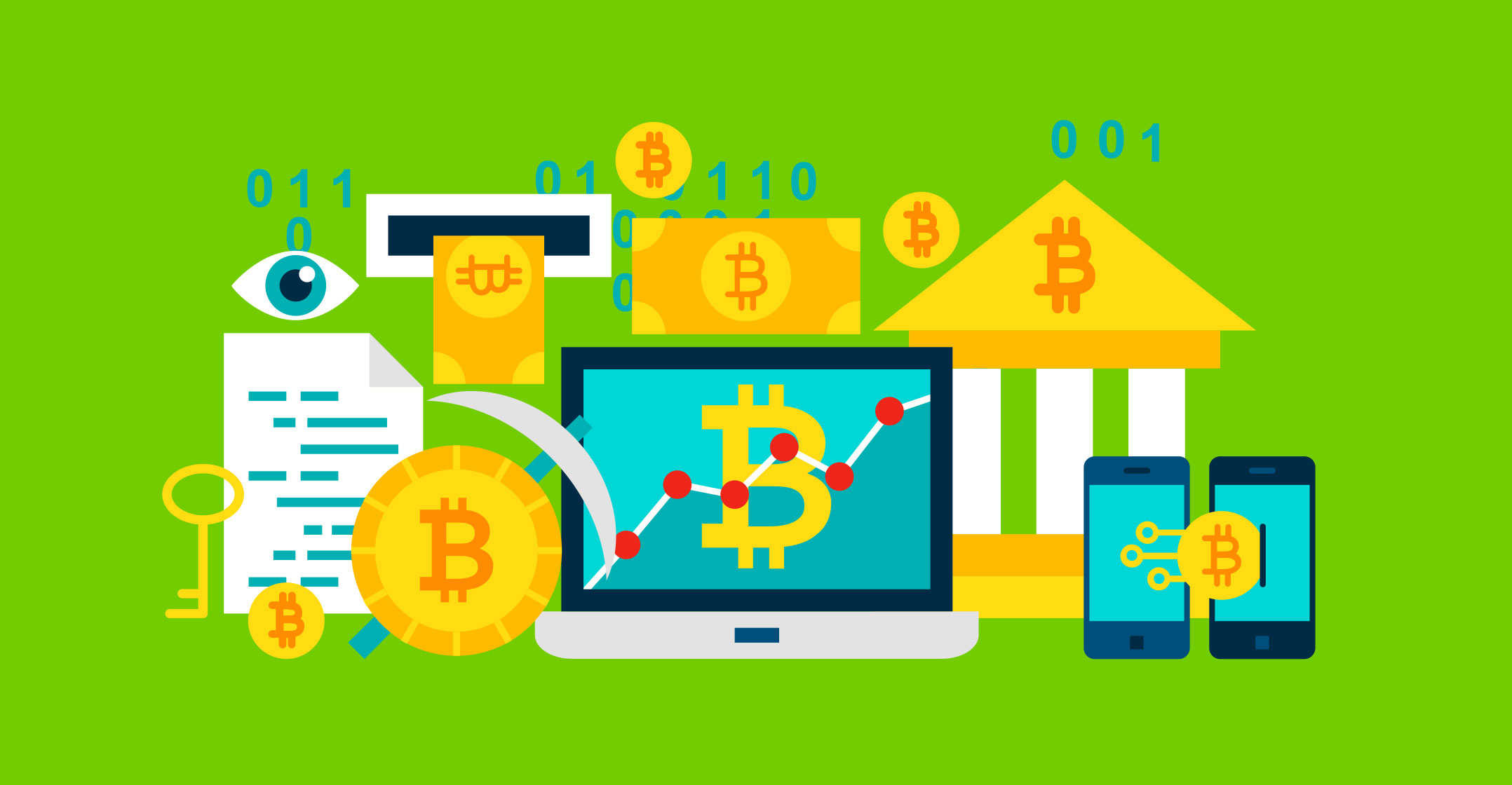 After hitting all-time highs in 2021, cryptocurrency prices haven’t found a definitive floor. And the appeal of crypto’s promise to reinvent money has also reached its limit in a very niche audience. To attract a bigger, more mainstream user base, the new technology’s advocates will have to completely overhaul how they promote it.
After hitting all-time highs in 2021, cryptocurrency prices haven’t found a definitive floor. And the appeal of crypto’s promise to reinvent money has also reached its limit in a very niche audience. To attract a bigger, more mainstream user base, the new technology’s advocates will have to completely overhaul how they promote it.
Imagine your cousin, your dentist or someone else you know who is the least likely to experiment with money or technology. I think about my mother. She’s never going to use a bitcoin wallet or open a savings account in USDC, a digital stablecoin pegged to the US dollar. She’ll never want a non-fungible token for a digital collectible on Tom Brady’s Autograph network. But she might be willing to verify her identity at her mortgage lender’s website if it allowed her to speed up the process for buying a house. And if that digital identification process was powered by the blockchain technology that underlies crypto, she wouldn’t even have to know.
Most people are like her: they have no interest in any new technology unless it can help them do things more quickly, more cheaply and more safely. That’s why iTunes was a winner. That’s why Amazon.com is a juggernaut. That’s why Netflix gained so many adherents. And that’s why payment apps such as Zelle and Venmo have mass appeal.
The trouble with crypto so far — in addition to its volatility, the scams and the failures of untested intermediaries — is that a lot of the problems it claims to solve have already been solved. We can already send digital payments or set up online savings accounts. And we can do it with the same currency we use to pay our taxes and make cash transactions. So why do we really need cryptocurrency?
Let’s go back to where it all started: our need to trust money. It’s why the financial industry is rife with such terms as trust, security, custodian, guaranty. Nonetheless, every so often there’s a calamitous break of trust in which bankruptcies proliferate, investors are wiped out and millions lose their jobs and homes.
Enter crypto
One example was the Great Depression, when people discovered the banks to which they’d entrusted their money weren’t as secure as they’d hoped. In the aftermath, the power of the government and a new regulatory structure were placed behind the banks to help restore trust. In the US that meant the creation of the Federal Deposit Insurance Corp, the Securities and Exchange Commission and a new housing authority to help support an increase in home loans.
Then the 2008 financial crisis showed how inadequate those safeguards were. Big financial institutions and their regulators seemed unprepared for the collapse of home prices and the effect that had on financial markets and the broader economy. Suddenly people didn’t trust banks or the government.
Enter crypto. Bitcoin was born in a white paper published on 31 October 2008, just weeks after Lehman Brothers went bankrupt and the US government and Federal Reserve started rescuing banks. The paper declared that digital commerce was overly dependent on trust in financial institutions. The idea was to create “an electronic payment system based on cryptographic proof instead of trust”. Effectively, trustlessness. Instead of relying on the bankers who repossessed your home while paying themselves massive bonuses, people could opt into a secure, decentralised network called the blockchain. Crypto, the enthusiasts said, would rival the existing centralised financial system in due course.
Almost 15 years later, this new money has lost much of its utopian appeal. It turns out that, for most people, this new financial system does require placing your trust in an institution — maybe a wallet provider or a token exchange or a decentralised finance (DeFi) lender. And too many of them have turned out to be frauds or vulnerable to hacks. Today even some of the most passionate crypto advocates are saying the market needs government regulation to regain trust and bring in the established financial institutions that were once the enemies of crypto.
 If crypto doesn’t provide a more trustworthy alternative to traditional finance, then what’s it for? So far, its primary users seem to be people fearful of using their own government’s currency because of political or economic risk or because they want to evade law enforcement. Otherwise, its main use has been speculation — gambling on the value of the currencies themselves or digital assets, such as NFTs, purchased with the currencies.
If crypto doesn’t provide a more trustworthy alternative to traditional finance, then what’s it for? So far, its primary users seem to be people fearful of using their own government’s currency because of political or economic risk or because they want to evade law enforcement. Otherwise, its main use has been speculation — gambling on the value of the currencies themselves or digital assets, such as NFTs, purchased with the currencies.
I have an idea, though. When we talk about financial transactions, we’re really talking about two different things.
There’s money, a medium of exchange that allows us to buy or sell goods and services more efficiently than bartering. But to make such a medium trustworthy, it needs to be a reliable store of value over time. Otherwise you risk exchanging your valuable good or service for a token that quickly sinks in purchasing power. Indeed, it’s the inter-temporal nature of some transactions that requires the most trust.
So when we talk about money, the second thing we’re also talking about is debt — that is, transactions that are inter-temporal from the start. At the end of the first quarter of 2022, total credit to the private non-financial sector was more than $37-trillion in the US.
The idea of moving some of our financial system to a distributed ledger might still work
And few types of debt are more mainstream than mortgages. Back in 1920s America, buying a house might require paying half the value up front and borrowing the other half for five years. Before the US government stepped in, lenders didn’t trust buyers enough to make a 30-year loan with only 10% or 20% upfront, as is common today. Now there are more than $10-trillion worth of residential mortgages in the US.
But real estate transactions and mortgage lending are notorious for the amount and complexity of the paperwork required. Keeping track of the necessary information and processing it efficiently can be challenging. Facilitating those types of transactions — by putting essential information about properties, owners and loans on an immutable digital ledger — could make crypto indispensable.
For the loan originators, after an upfront investment in the technology, a digital record could lead to considerable savings in time and labour. Some of those savings could be passed on to the borrowers. For the mortgage applicant, automated verification of identity, income, bank account statements and the like would speed up a stressful but unavoidable process.
If established and regulated financial services companies moved their home lending documentation on to such an ecosystem, eventually they might move myriad other services, too.
 We’ve already seen some well-known companies investing in blockchain technology. Hedera Hashgraph has buy-in from some of the biggest names in technology and banking, including Boeing, Deutsche Telekom, Google, LG and Nomura. And even though JPMorgan CEO Jamie Dimon has called cryptocurrencies “decentralised Ponzi schemes”, he’s investing the bank’s money in a digital ledger called Onyx coin systems, which JPMorgan’s website describes as seeking “to help address the complex challenges of cross-border payments, simplify clients’ liquidity funding needs and offer next-generation corporate treasury services”. Could this augur a new future for crypto’s underlying technology? A highly regulated system made up of established companies transacting through a more secure digital database?
We’ve already seen some well-known companies investing in blockchain technology. Hedera Hashgraph has buy-in from some of the biggest names in technology and banking, including Boeing, Deutsche Telekom, Google, LG and Nomura. And even though JPMorgan CEO Jamie Dimon has called cryptocurrencies “decentralised Ponzi schemes”, he’s investing the bank’s money in a digital ledger called Onyx coin systems, which JPMorgan’s website describes as seeking “to help address the complex challenges of cross-border payments, simplify clients’ liquidity funding needs and offer next-generation corporate treasury services”. Could this augur a new future for crypto’s underlying technology? A highly regulated system made up of established companies transacting through a more secure digital database?
Not only do these initiatives lack the Wild West appeal of crypto’s early years, but they’re also the opposite of the totally anonymous and decentralised networks that crypto enthusiasts hoped to create. Ethereum’s website describes DeFi as “an alternative to a system that’s opaque, tightly controlled and held together by decades-old infrastructure and processes”. But ethereum’s examples for DeFi’s current use cases — helping people take out loans without using any personal identification and enabling crypto-savvy Argentines to escape inflation — seem unlikely to scale up to the mainstream.
When I started thinking about crypto and trust, I was optimistic about the chances for a reboot of the crypto space. But as I thought more about how existing crypto platforms are organised, it seemed almost impossible to transform the culture of DeFi and NFTs into something that can truly replace existing banks and money. But the idea of moving some of our financial system to a distributed ledger might still work.
We could end up with a hybrid of three different systems of trust: trust in established brands and institutions, trust in regulatory protections, and the trust created by a supposedly immutable and unhackable digital ledger. All of these have been shown to be imperfect by the Great Depression, the 2008 great financial crisis and the crypto meltdown. Maybe the combination will be less imperfect. There’s some value in that. But it’s not the future of money. — (c) 2022 Bloomberg LP

